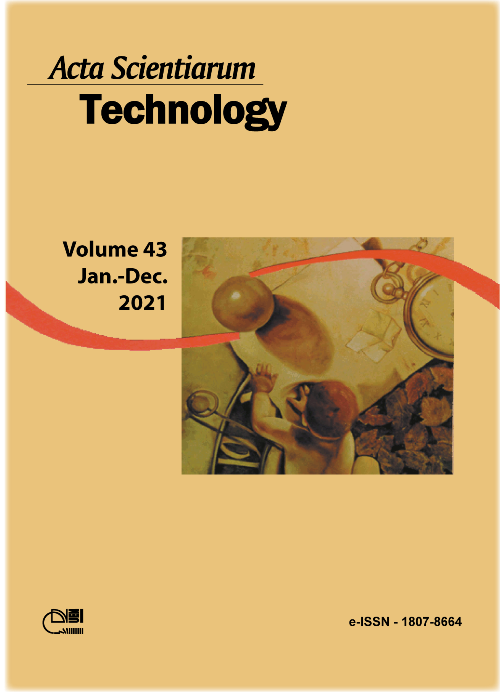Emulsifying properties of quail egg white proteins in different vegetable oil emulsions
DOI:
https://doi.org/10.4025/actascitechnol.v43i1.50067Keywords:
functional properties; protein concentration; salt concentration; conductivity; emulsifying activity; emulsion stability.Abstract
Emulsifying properties of oil in water emulsions using quail egg white protein (Coturnix coturnix japonica) as an emulsifying agent were investigated using the conductivity technique. Changes in emulsion conductivity were recorded during and after homogenization. The results were interpreted in terms of properties related to the emulsifying activity and emulsion stability. The effect of salt concentrations (NaCl) of 0.0, 0.29, 0.59, 1.17, 1.76, and 2.34% (w v-1) when mixed with egg white concentrations of 0.50, 1.00 and 1.50% (w v-1) were studied using corn and soybean vegetable oils. Globally, one observed that emulsifying activity and emulsion stability increase with the enhancement of salt concentration. However, the increase of the egg white concentration did not present a significant influence on emulsifying activity, causing an increment only in emulsion stability.
Downloads
Downloads
Published
How to Cite
Issue
Section
License
DECLARATION OF ORIGINALITY AND COPYRIGHTS
I Declare that current article is original and has not been submitted for publication, in part or in whole, to any other national or international journal.
The copyrights belong exclusively to the authors. Published content is licensed under Creative Commons Attribution 4.0 (CC BY 4.0) guidelines, which allows sharing (copy and distribution of the material in any medium or format) and adaptation (remix, transform, and build upon the material) for any purpose, even commercially, under the terms of attribution.
Read this link for further information on how to use CC BY 4.0 properly.



















8.png)




